Chrysler 2010 Annual Report Download - page 150
Download and view the complete annual report
Please find page 150 of the 2010 Chrysler annual report below. You can navigate through the pages in the report by either clicking on the pages listed below, or by using the keyword search tool below to find specific information within the annual report.-
 1
1 -
 2
2 -
 3
3 -
 4
4 -
 5
5 -
 6
6 -
 7
7 -
 8
8 -
 9
9 -
 10
10 -
 11
11 -
 12
12 -
 13
13 -
 14
14 -
 15
15 -
 16
16 -
 17
17 -
 18
18 -
 19
19 -
 20
20 -
 21
21 -
 22
22 -
 23
23 -
 24
24 -
 25
25 -
 26
26 -
 27
27 -
 28
28 -
 29
29 -
 30
30 -
 31
31 -
 32
32 -
 33
33 -
 34
34 -
 35
35 -
 36
36 -
 37
37 -
 38
38 -
 39
39 -
 40
40 -
 41
41 -
 42
42 -
 43
43 -
 44
44 -
 45
45 -
 46
46 -
 47
47 -
 48
48 -
 49
49 -
 50
50 -
 51
51 -
 52
52 -
 53
53 -
 54
54 -
 55
55 -
 56
56 -
 57
57 -
 58
58 -
 59
59 -
 60
60 -
 61
61 -
 62
62 -
 63
63 -
 64
64 -
 65
65 -
 66
66 -
 67
67 -
 68
68 -
 69
69 -
 70
70 -
 71
71 -
 72
72 -
 73
73 -
 74
74 -
 75
75 -
 76
76 -
 77
77 -
 78
78 -
 79
79 -
 80
80 -
 81
81 -
 82
82 -
 83
83 -
 84
84 -
 85
85 -
 86
86 -
 87
87 -
 88
88 -
 89
89 -
 90
90 -
 91
91 -
 92
92 -
 93
93 -
 94
94 -
 95
95 -
 96
96 -
 97
97 -
 98
98 -
 99
99 -
 100
100 -
 101
101 -
 102
102 -
 103
103 -
 104
104 -
 105
105 -
 106
106 -
 107
107 -
 108
108 -
 109
109 -
 110
110 -
 111
111 -
 112
112 -
 113
113 -
 114
114 -
 115
115 -
 116
116 -
 117
117 -
 118
118 -
 119
119 -
 120
120 -
 121
121 -
 122
122 -
 123
123 -
 124
124 -
 125
125 -
 126
126 -
 127
127 -
 128
128 -
 129
129 -
 130
130 -
 131
131 -
 132
132 -
 133
133 -
 134
134 -
 135
135 -
 136
136 -
 137
137 -
 138
138 -
 139
139 -
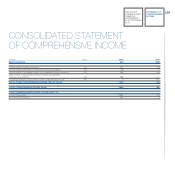 140
140 -
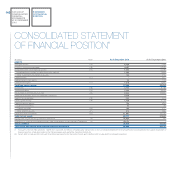 141
141 -
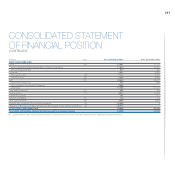 142
142 -
 143
143 -
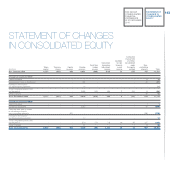 144
144 -
 145
145 -
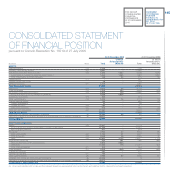 146
146 -
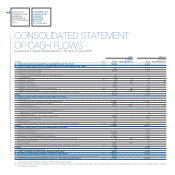 147
147 -
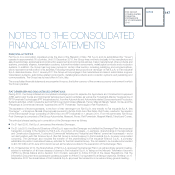 148
148 -
 149
149 -
 150
150 -
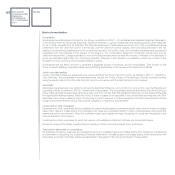 151
151 -
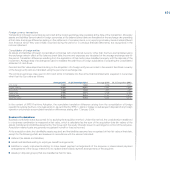 152
152 -
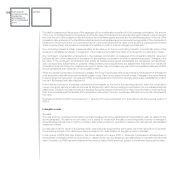 153
153 -
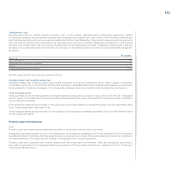 154
154 -
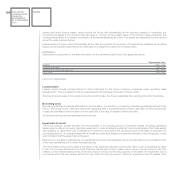 155
155 -
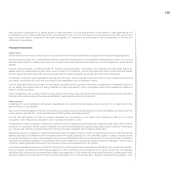 156
156 -
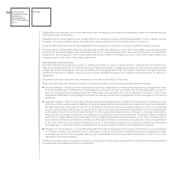 157
157 -
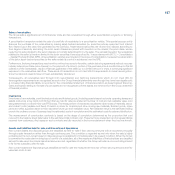 158
158 -
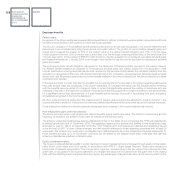 159
159 -
 160
160 -
 161
161 -
 162
162 -
 163
163 -
 164
164 -
 165
165 -
 166
166 -
 167
167 -
 168
168 -
 169
169 -
 170
170 -
 171
171 -
 172
172 -
 173
173 -
 174
174 -
 175
175 -
 176
176 -
 177
177 -
 178
178 -
 179
179 -
 180
180 -
 181
181 -
 182
182 -
 183
183 -
 184
184 -
 185
185 -
 186
186 -
 187
187 -
 188
188 -
 189
189 -
 190
190 -
 191
191 -
 192
192 -
 193
193 -
 194
194 -
 195
195 -
 196
196 -
 197
197 -
 198
198 -
 199
199 -
 200
200 -
 201
201 -
 202
202 -
 203
203 -
 204
204 -
 205
205 -
 206
206 -
 207
207 -
 208
208 -
 209
209 -
 210
210 -
 211
211 -
 212
212 -
 213
213 -
 214
214 -
 215
215 -
 216
216 -
 217
217 -
 218
218 -
 219
219 -
 220
220 -
 221
221 -
 222
222 -
 223
223 -
 224
224 -
 225
225 -
 226
226 -
 227
227 -
 228
228 -
 229
229 -
 230
230 -
 231
231 -
 232
232 -
 233
233 -
 234
234 -
 235
235 -
 236
236 -
 237
237 -
 238
238 -
 239
239 -
 240
240 -
 241
241 -
 242
242 -
 243
243 -
 244
244 -
 245
245 -
 246
246 -
 247
247 -
 248
248 -
 249
249 -
 250
250 -
 251
251 -
 252
252 -
 253
253 -
 254
254 -
 255
255 -
 256
256 -
 257
257 -
 258
258 -
 259
259 -
 260
260 -
 261
261 -
 262
262 -
 263
263 -
 264
264 -
 265
265 -
 266
266 -
 267
267 -
 268
268 -
 269
269 -
 270
270 -
 271
271 -
 272
272 -
 273
273 -
 274
274 -
 275
275 -
 276
276 -
 277
277 -
 278
278 -
 279
279 -
 280
280 -
 281
281 -
 282
282 -
 283
283 -
 284
284 -
 285
285 -
 286
286 -
 287
287 -
 288
288 -
 289
289 -
 290
290 -
 291
291 -
 292
292 -
 293
293 -
 294
294 -
 295
295 -
 296
296 -
 297
297 -
 298
298 -
 299
299 -
 300
300 -
 301
301 -
 302
302 -
 303
303 -
 304
304 -
 305
305 -
 306
306 -
 307
307 -
 308
308 -
 309
309 -
 310
310 -
 311
311 -
 312
312 -
 313
313 -
 314
314 -
 315
315 -
 316
316 -
 317
317 -
 318
318 -
 319
319 -
 320
320 -
 321
321 -
 322
322 -
 323
323 -
 324
324 -
 325
325 -
 326
326 -
 327
327 -
 328
328 -
 329
329 -
 330
330 -
 331
331 -
 332
332 -
 333
333 -
 334
334 -
 335
335 -
 336
336 -
 337
337 -
 338
338 -
 339
339 -
 340
340 -
 341
341 -
 342
342 -
 343
343 -
 344
344 -
 345
345 -
 346
346 -
 347
347 -
 348
348 -
 349
349 -
 350
350 -
 351
351 -
 352
352 -
 353
353 -
 354
354 -
 355
355 -
 356
356 -
 357
357 -
 358
358 -
 359
359 -
 360
360 -
 361
361 -
 362
362 -
 363
363 -
 364
364 -
 365
365 -
 366
366 -
 367
367 -
 368
368 -
 369
369 -
 370
370 -
 371
371 -
 372
372 -
 373
373 -
 374
374 -
 375
375 -
 376
376 -
 377
377 -
 378
378 -
 379
379 -
 380
380 -
 381
381 -
 382
382 -
 383
383 -
 384
384 -
 385
385 -
 386
386 -
 387
387 -
 388
388 -
 389
389 -
 390
390 -
 391
391 -
 392
392 -
 393
393 -
 394
394 -
 395
395 -
 396
396 -
 397
397 -
 398
398 -
 399
399 -
 400
400 -
 401
401 -
 402
402
 |
 |

149
SIGNIFICANT ACCOUNTING POLICIES
Basis of preparation
The 2010 consolidated financial statements have been prepared in accordance with the International Financial Reporting
Standards (the “IFRS”) issued by the International Accounting Standards Board (“IASB”) and adopted by the European Union,
and with the provisions implementing article 9 of Legislative Decree no. 38/2005. The designation “IFRS” also includes all valid
International Accounting Standards (“IAS”), as well as all interpretations of the International Financial Reporting Interpretations
Committee (“IFRIC”), formerly the Standing Interpretations Committee (“SIC”).
The financial statements are prepared under the historical cost convention, modified as required for the valuation of certain
financial instruments, as well as on the going concern assumption. In this respect, despite operating in a continuingly difficult
economic and financial environment, the Group’s assessment is that no material uncertainties (as defined in paragraph 25 of
IAS 1) exist about its ability to continue as a going concern, in view also of the measures already undertaken by the Group to
adapt to the changed levels of demand and the Group’s industrial and financial flexibility.
Format of the financial statements
The Group presents an income statement using a classification based on the function of expenses (otherwise known as the “cost
of sales” method), rather than based on their nature, as this is believed to provide information that is more relevant. The format
selected is that used for managing the business and for management reporting purposes and is consistent with international
practice in the automotive sector. In this income statement, in which the classification of expenses is based on their function,
the Trading profit/(loss) is reported specifically as part of Operating profit/(loss) and separate from the income and expense
resulting from the non-recurring operations of the business, such as Gains (losses) on the sale of investments, Restructuring
costs and any Other income (expenses) defined as unusual and of a similar nature to these items. By doing this, it is believed
that the Group’s actual performance from normal trading operations may be measured in a better way, while disclosing specific
details of unusual income and expenses. Consequently, the definition of unusual transaction adopted by the Group differs from
that provided in the Consob Communication of 27 July, 2006, under which unusual and abnormal transactions are those which,
because of their significance or importance, the nature of the parties involved, the object of the transaction or the methods of
determining the transfer price or the timing of the event (close to the year end), may give rise to doubts regarding the accuracy/
completeness of the information in the financial statements, conflicts of interest, the safeguarding of an entity’s assets or the
protection of non-controlling interests.
For the Statement of financial position, a mixed format has been selected to present current and non-current assets and
liabilities, as permitted by IAS 1. In more detail, both companies carrying out industrial activities and those carrying out financial
activities are consolidated in the Group’s financial statements. The investment portfolios of financial services companies are
included in current assets, as the investments will be realised in their normal operating cycle. Financial services companies,
though, obtain funds only partially from the market: the remaining are obtained from Fiat S.p.A. through the Group’s treasury
companies (included in industrial companies), which lend funds both to industrial Group companies and to financial services
companies as the need arises. This financial service structure within the Group means that any attempt to separate current and
non-current debt in the consolidated Statement of financial position cannot be meaningful. Suitable disclosure of the due dates
of liabilities is moreover provided in the notes.
The Statement of Cash Flows is presented using the indirect method.
In connection with the requirements of the Consob Resolution No. 15519 of 27 July 2006 as to the format of the financial
statements, specific supplementary Income Statement, Statement of Financial Position and Statement of Cash Flows formats
have been added for related party transactions so as not to compromise an overall reading of the statements.
